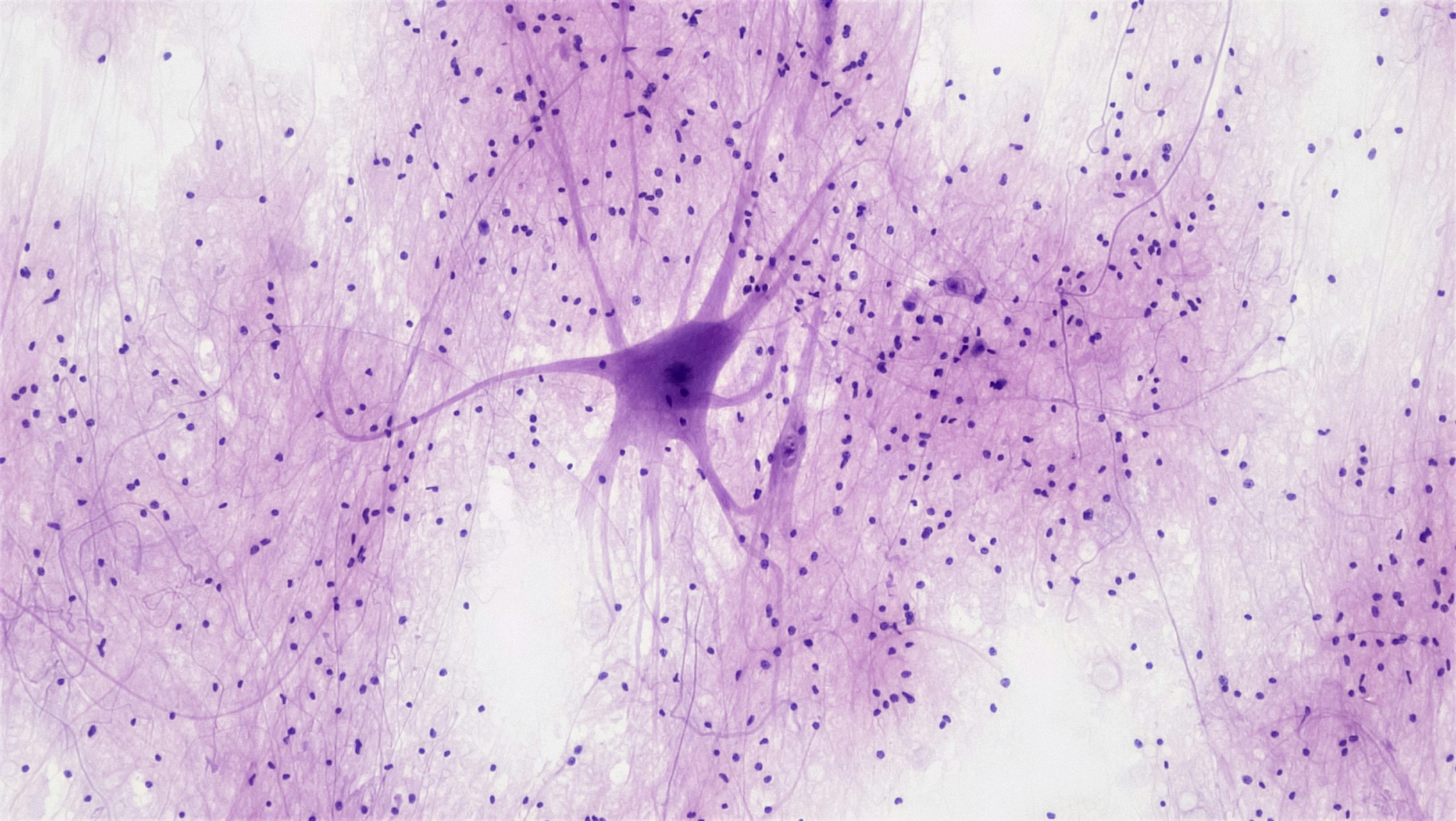Overall Schools Science Competition winner, Arushi Vasanad, explores the evolution of humans’ most powerful organ. Photo credit: Bioscience Image Library by Fayette Reynolds on Unsplash
Intelligence has been labelled as ‘the ability to learn from experiences and to adapt to, shape, and select environments. The definition thus bears the question; ‘At what point did humans evolve to meet this standard and what changes have caused it?’
The evolution of intelligence has been believed to be closely related to the development and evolutionary changes of the brain.
The evolution of intelligence has been believed to be closely related to the development and evolutionary changes of the brain. This has brought about many theories, particularly since the early 20th century where archaeological discoveries increased due to rising awareness and questioning about species evolving over time. The publication of Darwin’s prominent book ‘The Origin of Species’ not only caused much controversy but inspired many alternative hypotheses about evolution.
Consequently, more specific discoveries connecting intelligence to evolution began to emerge like Arthur Keith’s notion of Cerebral Rubicon where he argued that human intelligence was ’only possible once the brain had evolved to reach a particular threshold size’. The minimum volume of our genus Homo was approximately 600-750 cm cubed whereas for our species Homo Sapiens, it was 900 cm cubed . This theory was developed because humans had larger brains than other primates. Over the last 6 million years of human evolution, a trend towards larger brain sizes can be observed, with the significant increase in size being observed 2 million years ago with the emergence of the Homo genus. However, there is evidence of intellectual abilities in species with smaller brains, known as Homo Floresiensis and Homo Naledi respectively. The first species has a brain volume of 380-426 cm cubed ,similar to that of a chimpanzee. There is evidence of both species showing development. The H. Floresiensis are known to have made use of stone tools like Homo Sapiens while there if proof of the H. Naledi controlling fire (but this species is more recent – within the last 200,000-300,000 years). Nevertheless, these discoveries have occurred withing the 21st century making them still far from being certain proof.
Over the last 6 million years of human evolution, a trend towards larger brain sizes can be observed
Additionally, comparison with other species such as elephants and whales can disprove Keith’s theory as the human brain is up to 6 times smaller than that of some whales and dolphins therefore overall brain size cannot necessarily mean greater intelligence.
a larger cerebral cortex leads to more advanced language skills, information processing…
Evolution of intelligence has been linked to development of certain structures of the brain. For example, size has been proven relevant regarding specific areas of the brain, thus a larger cerebral cortex leads to more advanced language skills, information processing, etc. This can be shown to correspond accordingly in animals as well as with humans, with pigeons and owls also displaying very similar cerebral architecture to other mammals, which generally are viewed as displaying higher levels of intellect. This mysterious occurrence could be due to both species evolving similarly albeit independently, a rare mystery known as convergent evolution although there are signs of distant relation as ‘it is likely that an ancient microcircuit that already existed in the last common stem amniote might have been evolutionarily conserved and partly modified in birds and mammals,’
A structural change in the human brain that occurred during evolution was formation of folds of the brain. This was to create more space to accommodate for more neurons in the brain which in turn allows for more advanced cerebral function. Humans have more neurons in the outer layer of the brain and thicker insulation than most mammals, allowing for faster signal transmitting which can provide an explanation for how humans have evolved to be more intelligent beings than other animals.
A structural change in the human brain that occurred during evolution was formation of folds of the brain.
Contrarily, a recent study of corvids at the University of Tübingen showed that they not only had high intellect but also consciousness, allowing them to understand their surroundings which is a base of emotional intelligence, yet birds have smooth brains therefore proving that the brain’s layered structure is not relevant to all intelligence forms.
Overall evolution of the brain can be observed from DNA analysis of prehistoric genetic material, providing scientists an excellent visual on the brain structure of our ancestors and other ancient organisms. This can hopefully shine some light on the structural correlation of the brain with factors of intelligence and perhaps provide a more detailed insight into the true intelligence of other species to see if we are the only ones capable of higher thinking.
This article is also featured on Examable, our competition partner’s publication. For the full list of shortlisted finalists, visit here. You can also view where this article is published here.





